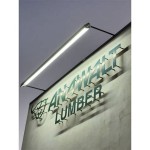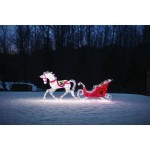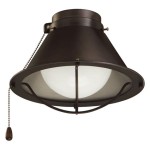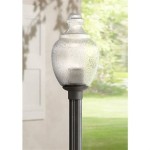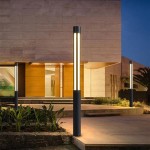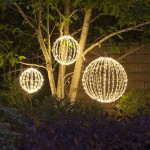What Is The Best Time of Day for Outdoor Photos?
Capturing stunning outdoor photos relies on a multitude of factors, including composition, subject matter, and lighting. Light, arguably the most critical element, drastically changes throughout the day, affecting the mood, colors, and overall impact of an image. Understanding how to leverage natural light is key to elevating outdoor photography from snapshots to captivating visuals. This article explores the optimal times for outdoor photography and how to utilize the unique qualities of light at different points of the day.
The Golden Hour: A Photographer's Paradise
The golden hour, occurring shortly after sunrise and before sunset, is widely considered the prime time for outdoor photography. During these periods, the sun sits low on the horizon, casting a warm, soft, and diffused light. Shadows lengthen, adding depth and dimension to scenes. The lower angle of the sun reduces harsh contrasts and minimizes overexposure, resulting in images with rich, vibrant colors and a magical, ethereal glow. The golden hour is ideal for various photography genres, including landscapes, portraits, and architecture.
Photographers utilize the golden hour's soft light to capture flattering portraits with warm skin tones and minimized blemishes. Landscape photographers capitalize on the long shadows and rich hues to create dramatic and evocative images. The golden hour also lends itself well to architectural photography, highlighting textures and details while minimizing harsh glare.
The Blue Hour: Embracing the Cool Tones
The blue hour, occurring just before sunrise and after sunset, offers a different, yet equally captivating, lighting scenario. As the sun dips below the horizon, the sky takes on a cool, deep blue hue. This period is characterized by soft, diffused light with a lower intensity than the golden hour. The blue hour presents a unique opportunity to capture serene and moody images.
Cityscapes often benefit from the blue hour's cool tones, with city lights beginning to twinkle against the darkening sky. The tranquil atmosphere lends itself to capturing reflective surfaces like water, enhancing the ethereal quality of the scene. Long exposure photography during the blue hour can create stunning light trails from moving vehicles and blur the movement of water, adding a dynamic element to otherwise static compositions.
Overcast Days: The Softbox Effect
While sunny days are often associated with ideal photography conditions, overcast days offer a unique advantage. The cloud cover acts as a giant softbox, diffusing the sunlight and creating even, soft illumination. This diffused light minimizes harsh shadows and reduces contrast, making it ideal for capturing details and textures. Overcast conditions are particularly favorable for portrait photography, as they eliminate the need to contend with squinting subjects and harsh shadows on faces.
Nature photography also benefits from overcast skies. The soft light enhances the vibrancy of colors in flowers and foliage, allowing for even exposure across the entire scene. The absence of harsh shadows reveals intricate details in textures, making overcast days perfect for capturing close-up shots of plants and other natural elements. Furthermore, the diffused light allows for longer exposure times without the risk of overexposure, providing opportunities for creative experimentation.
Midday Light: Challenges and Opportunities
Midday light, with the sun directly overhead, presents the most challenging conditions for outdoor photography. The intense light creates strong shadows and high contrast, potentially leading to overexposed highlights and underexposed shadows. However, with careful consideration and appropriate techniques, midday light can also be utilized effectively.
Utilizing fill flash during midday can help balance the harsh shadows, illuminating subjects and reducing contrast. Seeking out shaded areas can create more even lighting conditions, mimicking the soft light of overcast days. Alternatively, embracing the high contrast can be used to create dramatic images with strong shadows and highlights, particularly in black and white photography. Understanding how to manipulate light and shadow during midday can result in unique and compelling images.
Considering the Season and Location
The optimal time of day for outdoor photography also varies depending on the season and location. During winter months, the golden hour is shorter and the sun sits lower in the sky, resulting in longer shadows. Conversely, summer months offer extended golden hours and higher sun angles. The geographical location also plays a role, influencing the duration and intensity of the golden and blue hours.
Understanding these seasonal and geographical variations is crucial for planning outdoor photography sessions. Researching sunrise and sunset times for specific locations and dates can help maximize the available light and optimize shooting schedules. Adapting to the specific lighting conditions of a particular location and time of year is essential for capturing compelling outdoor photographs.

What Is The Best Time Of Day For Outdoor Photos Stephanie Byrd Photography
The Best Time Of Day To Take Outdoor Portrait Photos Petapixel

The Best Time Of Day For Outdoor Photos Sigrid Wald Swanson Photography

What Is The Best Time Of Day For Outdoor Photos

What S The Best Time Of Day For An Outdoor Photo Shoot Little Brown Rabbit Photography

What S The Best Time Of Day To Take Outdoor Photos

Learn The Best Time To Take Pictures Outside And What Golden Hour Is

Photographer Jana Williams Best Time To Shoot Outdoors

When Is The Best Time Of Day To Schedule An Outdoor Family Photo Session Simple Joys With Helena Woods

Best Time Of The Day For An Outdoor Photoshoot In Glasgow Family Photography
